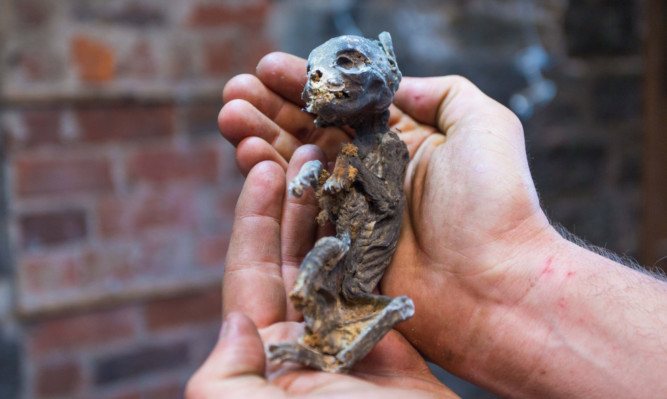They say walls have ears. But a nose, a tail and some whiskers too?
That was the gruesome discovery a Fife farmer made when he was revamping his home. Lurking behind the walls of the bathroom at Andrew Whiteford’s farmhouse, near Pittenweem, was a cat who had lost all of its nine lives.
Among the plaster and rubble was a small, mummified moggy. In understated fashion the find was, Andrew admitted, “quite spooky”.
“The house is between 150 and 200 years old and it must have been put in the wall to ward off evil but it is gruesome.”
Andrew thinks the location of his house might give some clue on why the talisman was placed there. “Pittenweem’s known for its witches, so maybe that’s why,” he said.
It was when Andrew was in the house alone, stripping the walls right back, that the grim discovery was made.
“I didn’t see it fall out but when I turned round there it was on the floor at my feet. It was quite, quite spooky.”
It seems bricking mummified cats behind walls in houses was quite a widespread practice across Europe centuries ago. It was felt they could ward off witches, the evil eye, bad luck, vermin or anything malevolent which could be seen as a threat to the house and those living there.
Six years ago a 400-year-old mummified cat was found in the house of a funeral director in Devon. Strangely, it too was discovered as builders renovated the bathroom of Richard Parson’s home.
And four years ago a similar cat was found in the walls of a 17th Century cottage, which was described as “spellbinding” by experts. The reason for this is the cottage was in the shadow of Pendle Hill, a notorious centre of witchcraft for centuries.
As for the Fife feline, Andrew is undecided what to do. He said he may put it carefully back in its tomb in the walls or see if he can donate it to a museum.
